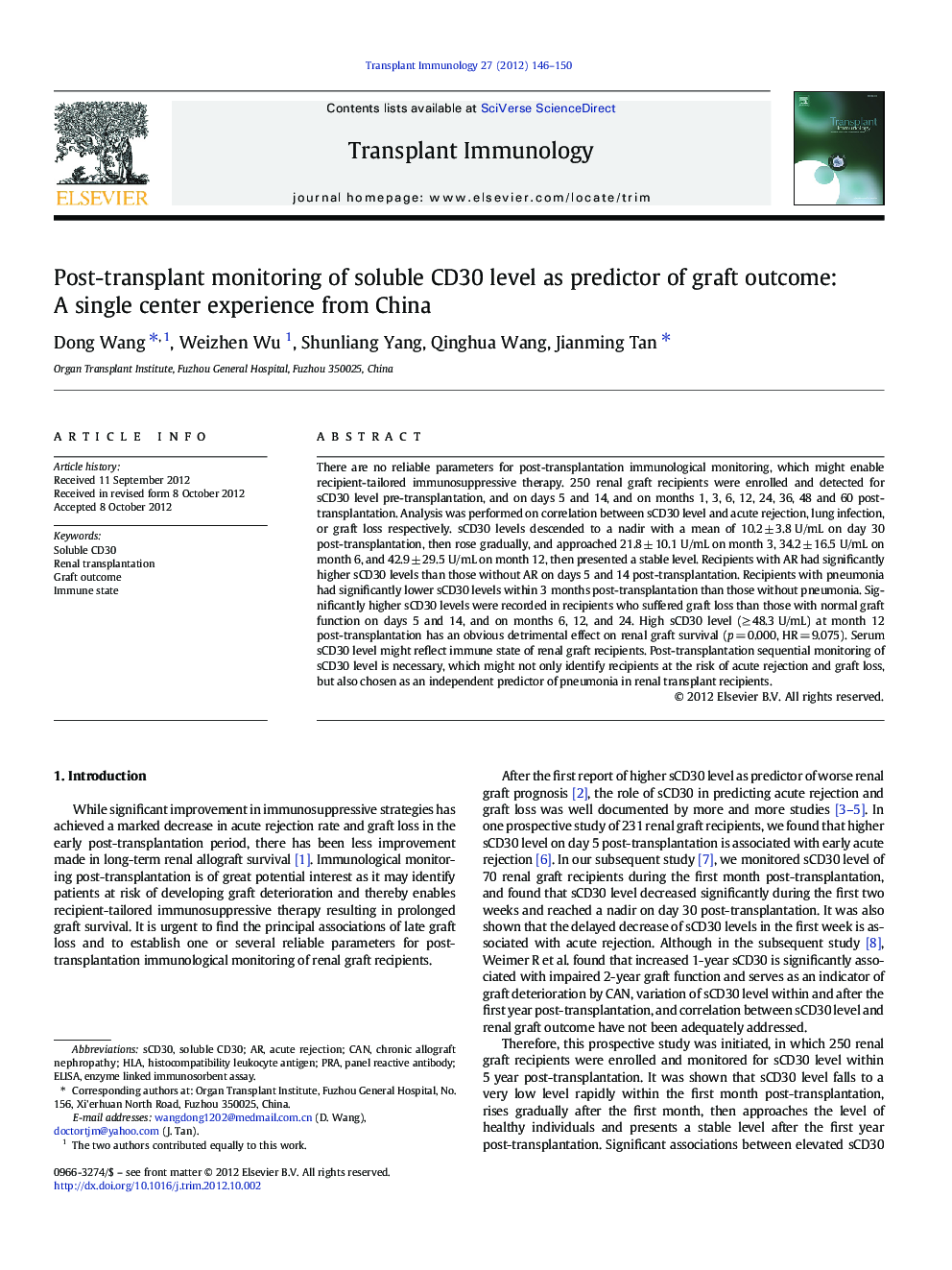| Article ID | Journal | Published Year | Pages | File Type |
|---|---|---|---|---|
| 3392091 | Transplant Immunology | 2012 | 5 Pages |
There are no reliable parameters for post-transplantation immunological monitoring, which might enable recipient-tailored immunosuppressive therapy. 250 renal graft recipients were enrolled and detected for sCD30 level pre-transplantation, and on days 5 and 14, and on months 1, 3, 6, 12, 24, 36, 48 and 60 post-transplantation. Analysis was performed on correlation between sCD30 level and acute rejection, lung infection, or graft loss respectively. sCD30 levels descended to a nadir with a mean of 10.2 ± 3.8 U/mL on day 30 post-transplantation, then rose gradually, and approached 21.8 ± 10.1 U/mL on month 3, 34.2 ± 16.5 U/mL on month 6, and 42.9 ± 29.5 U/mL on month 12, then presented a stable level. Recipients with AR had significantly higher sCD30 levels than those without AR on days 5 and 14 post-transplantation. Recipients with pneumonia had significantly lower sCD30 levels within 3 months post-transplantation than those without pneumonia. Significantly higher sCD30 levels were recorded in recipients who suffered graft loss than those with normal graft function on days 5 and 14, and on months 6, 12, and 24. High sCD30 level (≥ 48.3 U/mL) at month 12 post-transplantation has an obvious detrimental effect on renal graft survival (p = 0.000, HR = 9.075). Serum sCD30 level might reflect immune state of renal graft recipients. Post-transplantation sequential monitoring of sCD30 level is necessary, which might not only identify recipients at the risk of acute rejection and graft loss, but also chosen as an independent predictor of pneumonia in renal transplant recipients.
► Variation of sCD30 levels in 5 years post-transplant was shown. ► sCD30 levels descended to a nadir on day 30 post-transplant. ► There is a detrimental effect of high sCD30 level post-transplant on graft survival. ► Variation of sCD30 corresponds with that of immune state of renal graft recipients. ► Post-transplantation monitoring of sCD30 levels is necessary.
